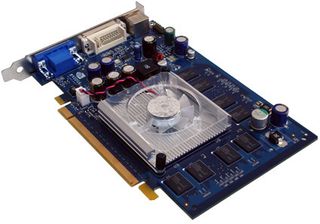Squeezing Value Out of Lower-End Cards
This Project's Scope
We encourage our readers to take advantage of our graphics charts to see the differences in performance between the different graphics cards. However, not all scenarios can be covered by a single guide. For example, we are often asked why we test on platforms that would most likely never be used with a low-end graphics card. For example, why would we test a $79 graphics card in a system with a $1,100 processor and other high-end parts?
The answer is easier than you might think. The goal of using such high-end components is to eliminate any potential issues that we can avoid by running the very fastest hardware available on the market. If there is a bottleneck from a slow processor, a lack of memory space, or from loading off a hard drive, we can minimize this risk with very fast parts. The only way to see the full potential of a card is to give it no limits.
In today's test we deviated from this logic to give our readers something they asked us for: inexpensive cards on a mid-range platform. For the graphics cards, we took two equipped with GPUs from ATI and one from the NVIDIA 6600 series to compare the performance at various levels. Not only did we run these cards at stock speeds but we also ran all of the tests at the maximum sustainable overclock that the graphics core and memory could handle.
The platform is also more representative of this target market. We limited the horsepower of the processor by using and AMD Athlon 64 3700+ and a memory capacity of 1 GB.

The first card for the project is the NVIDIA GeForce 6600, which has been coupled with DDR2 memory modules. We were impressed by the results when we tested one from XFX and the price was of a very good value. Sadly, XFX did not have this product available for purchase at the time of the review due to a redesign of the board to allow for dual DVI connections. The PV-T43P-UDS7 model is currently available but with a change in the sticker price. The original model was $99 and the dual DVI model is around $120.
The second card comes from the ATI Radeon X800XL line. PowerColor, and others to be released soon, have adopted a 16- pixel pipeline graphics core for their next round of Radeon X800GTO cards. Replacing the XL nomenclature, the GTO was reborn with more computational horsepower for $100 less compared to the XL versions.

Lastly we used the highest model version from the Radeon X1300 series. The X1300 Pro is the most advanced of these cards but is also the most pixel pipe limited out of the group. This card is already pushed to the limit from the factory and as you will see in the overclocking results, we couldn't push it any further. However, the model we used came from MSI and retails for $105 making it the least expensive in the group.
Stay on the Cutting Edge
Join the experts who read Tom's Hardware for the inside track on enthusiast PC tech news — and have for over 25 years. We'll send breaking news and in-depth reviews of CPUs, GPUs, AI, maker hardware and more straight to your inbox.
Most Popular

